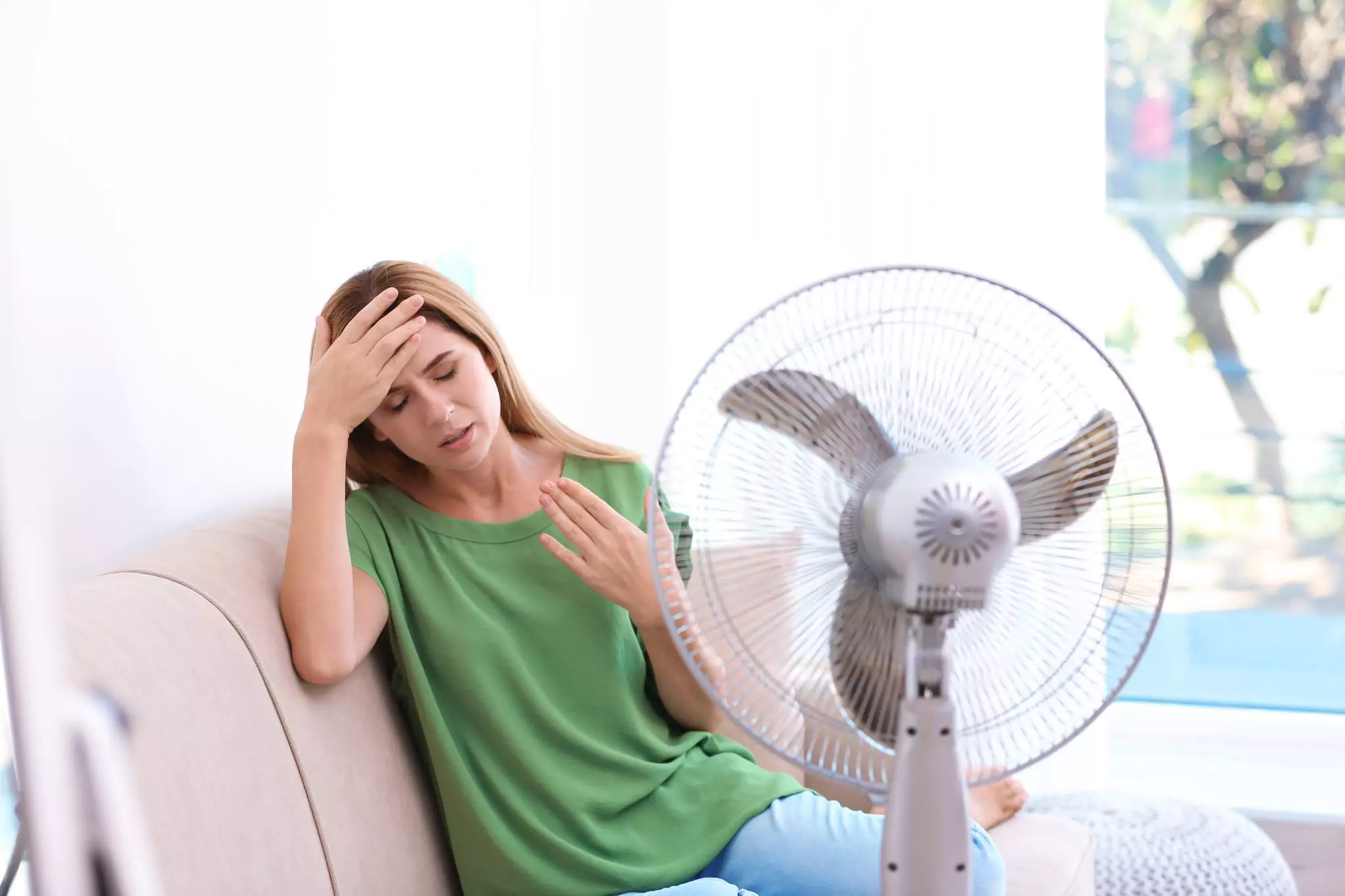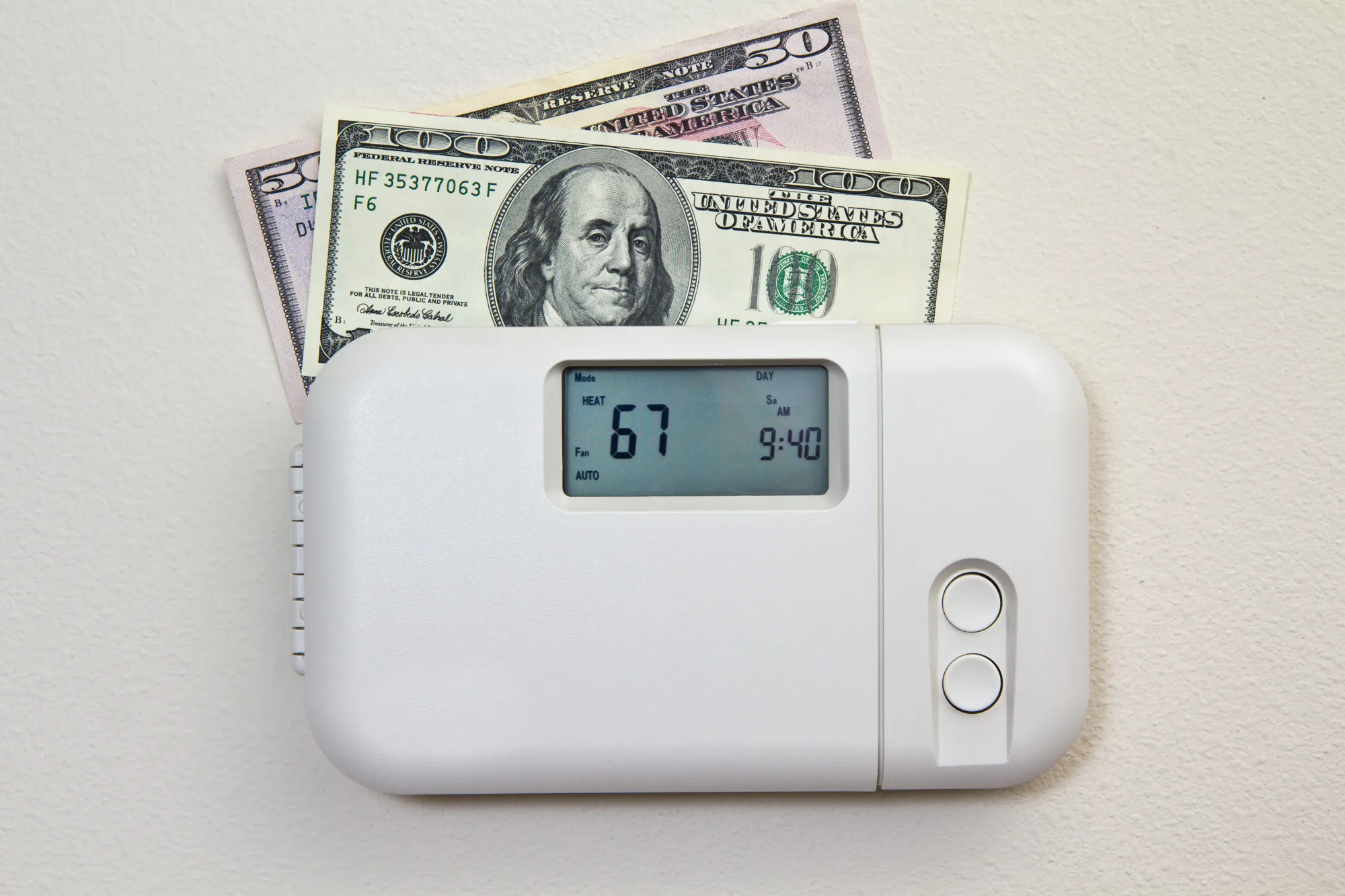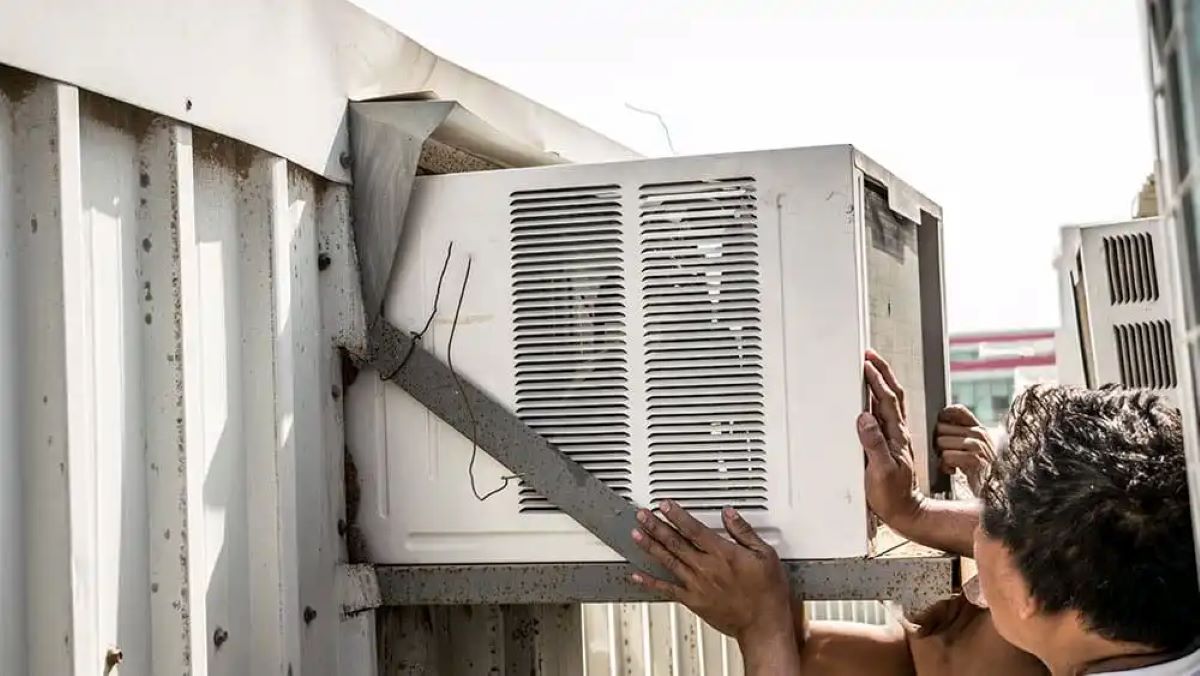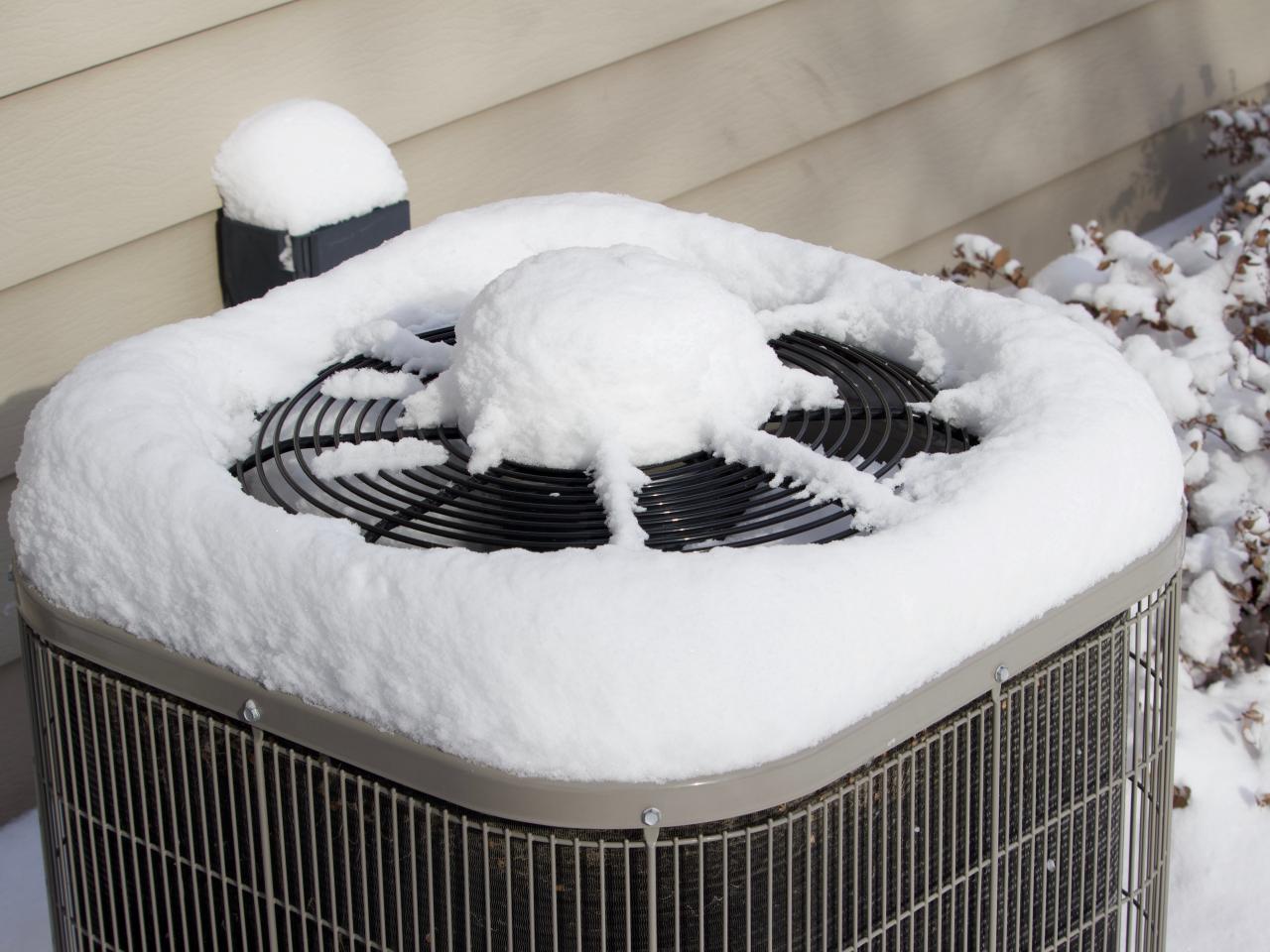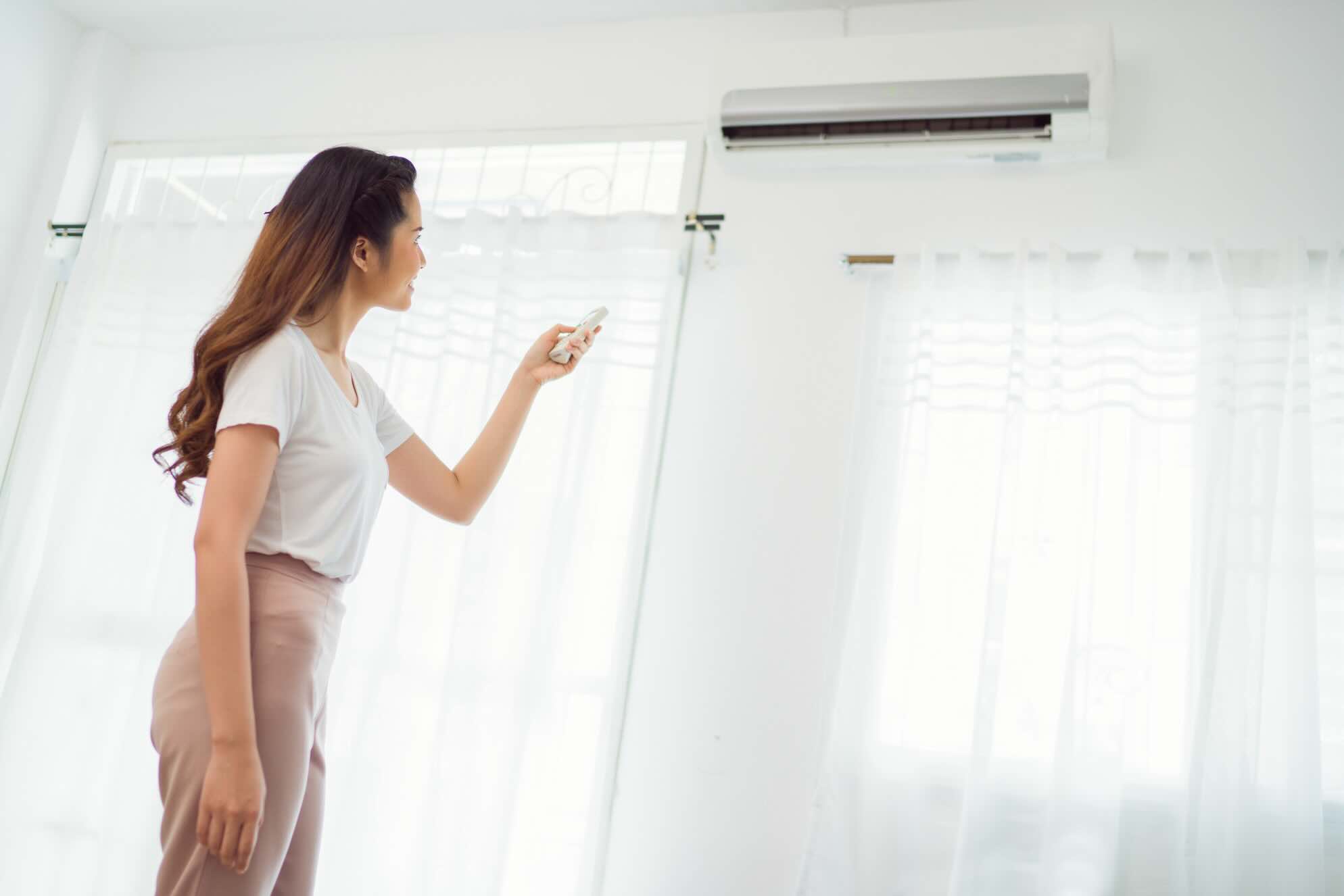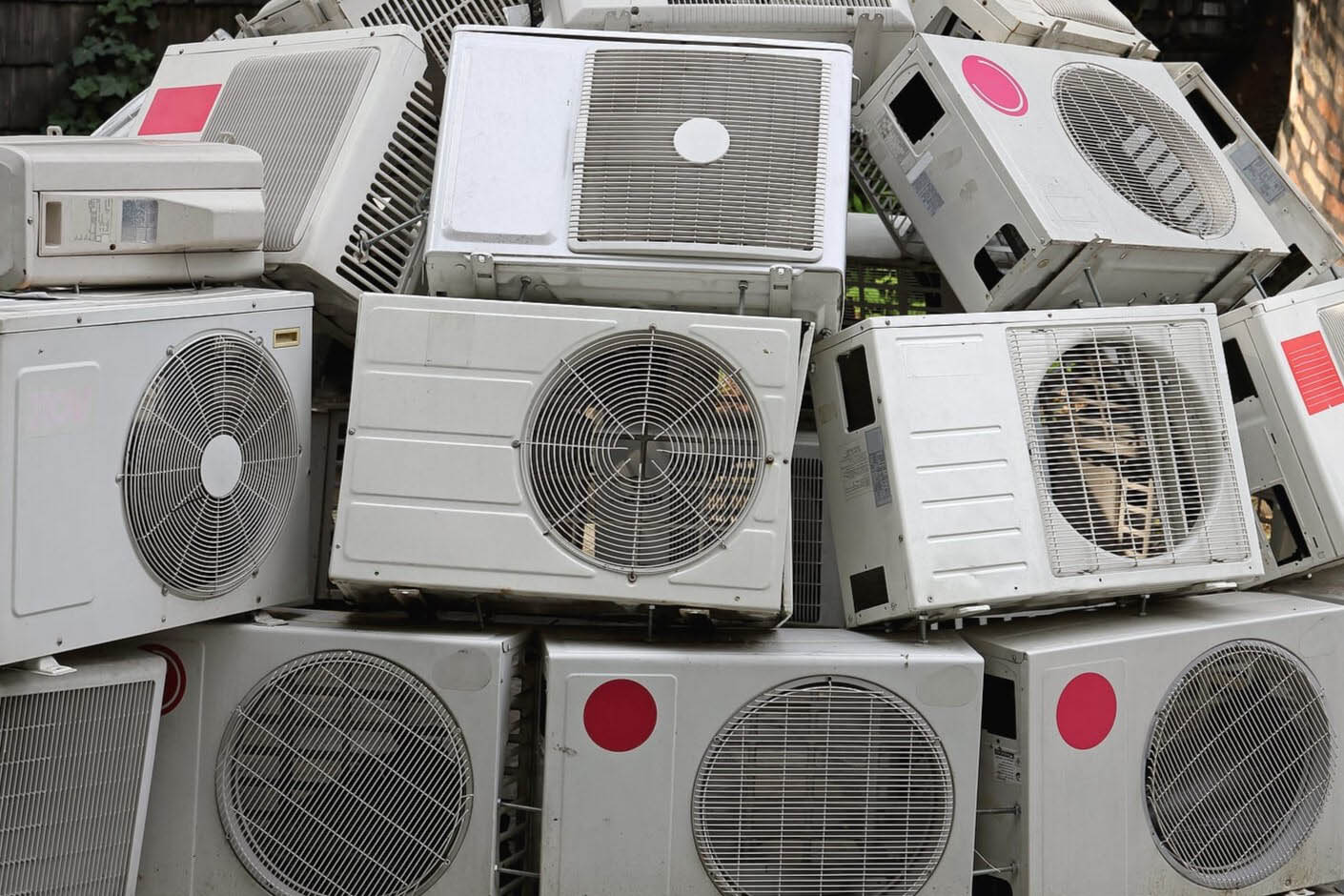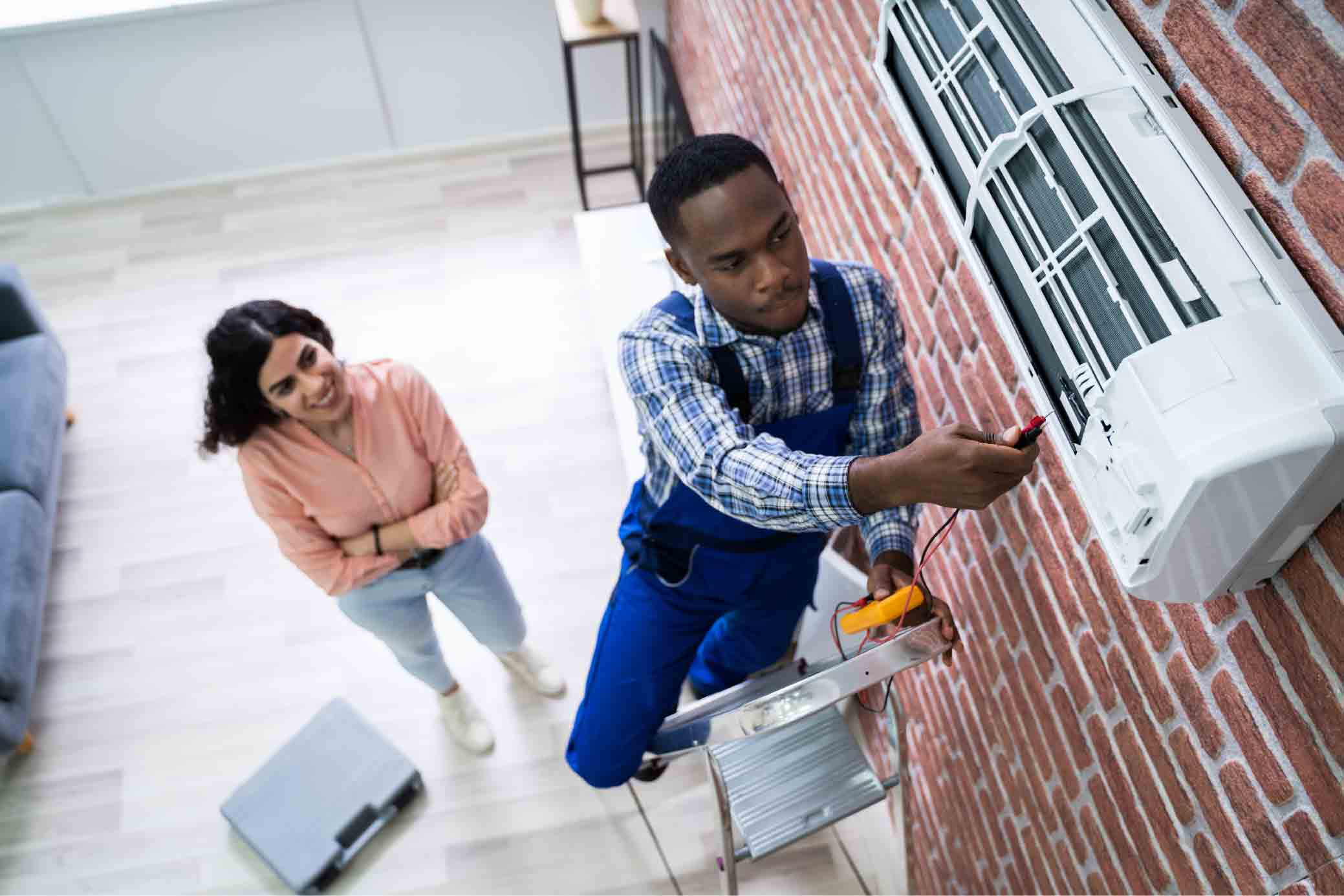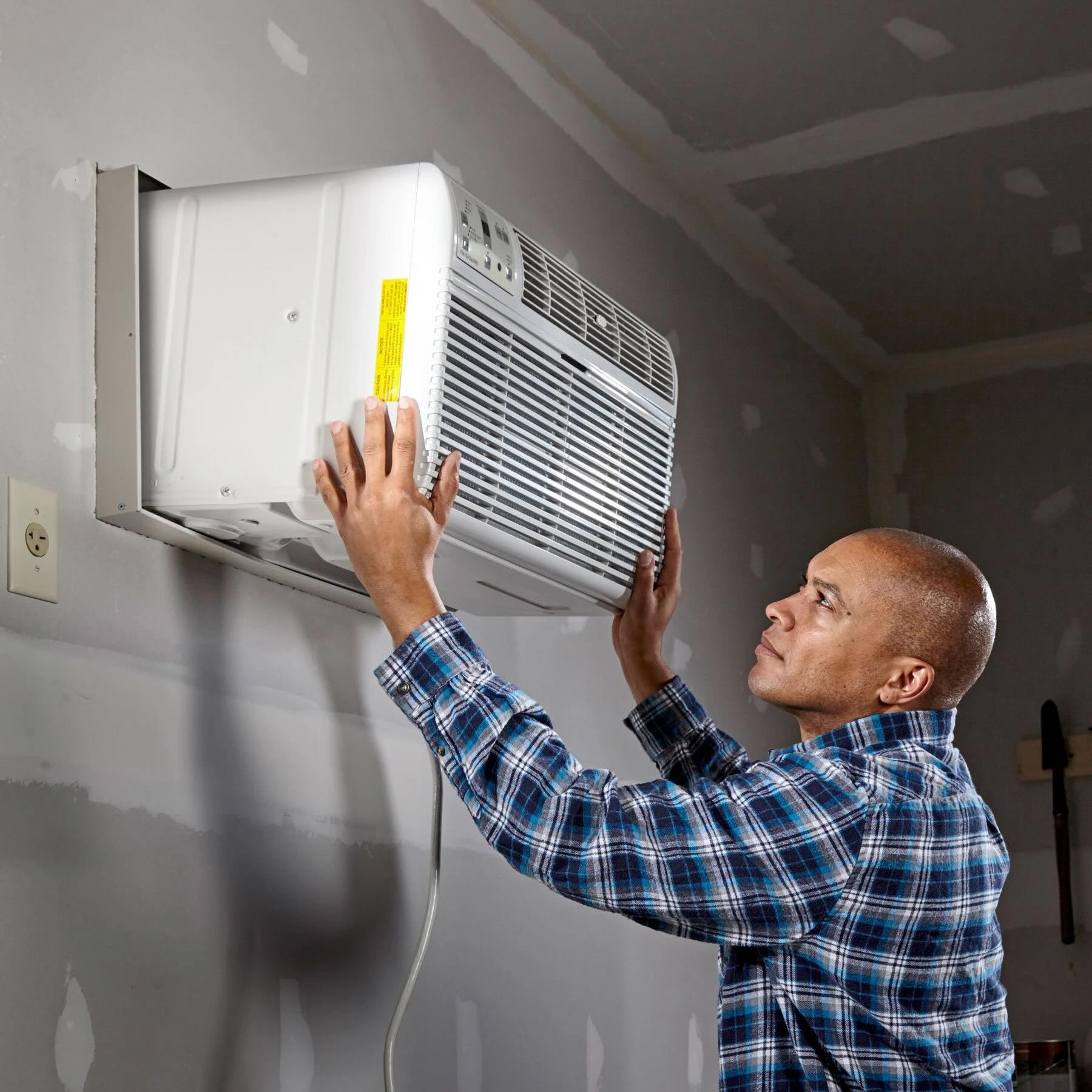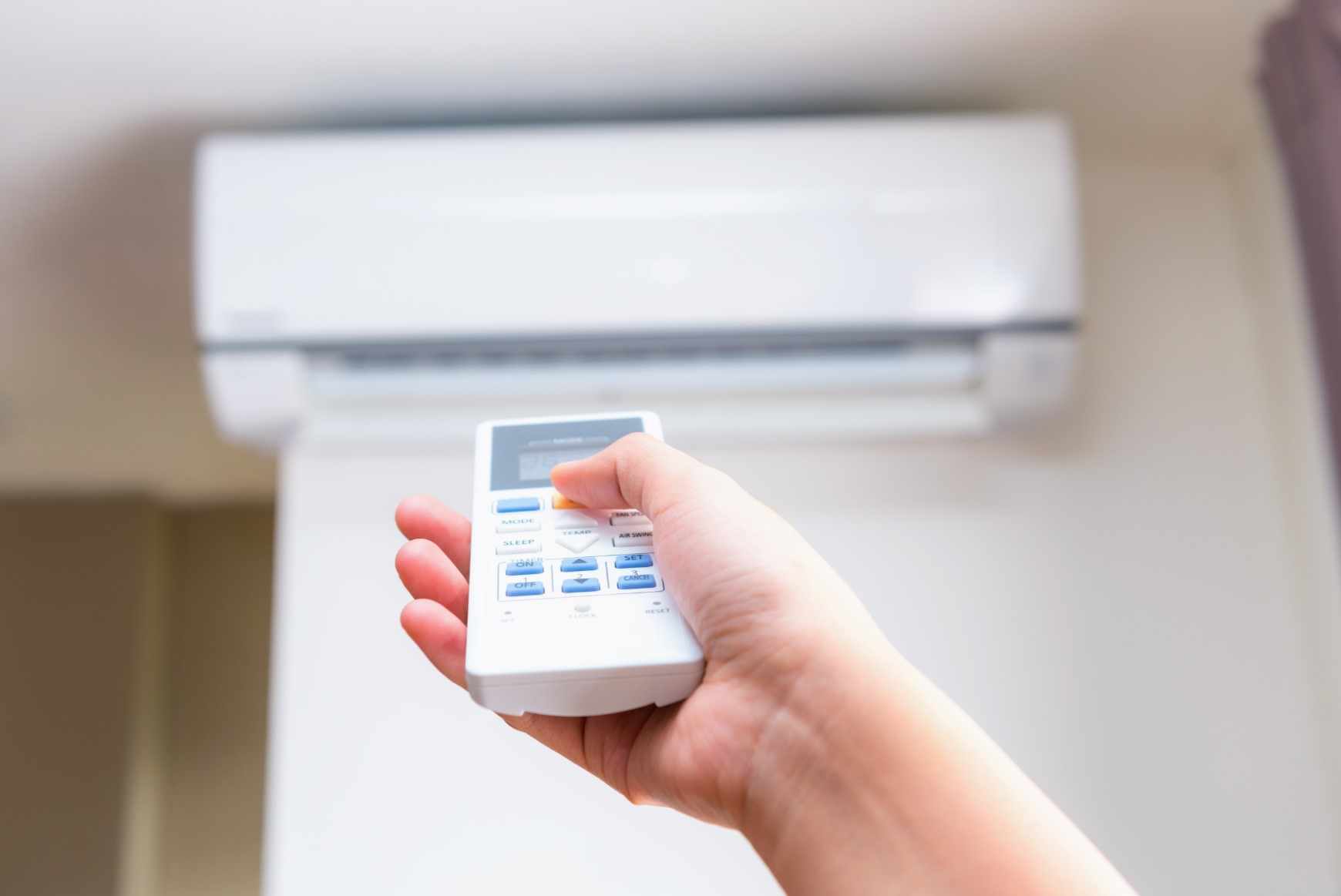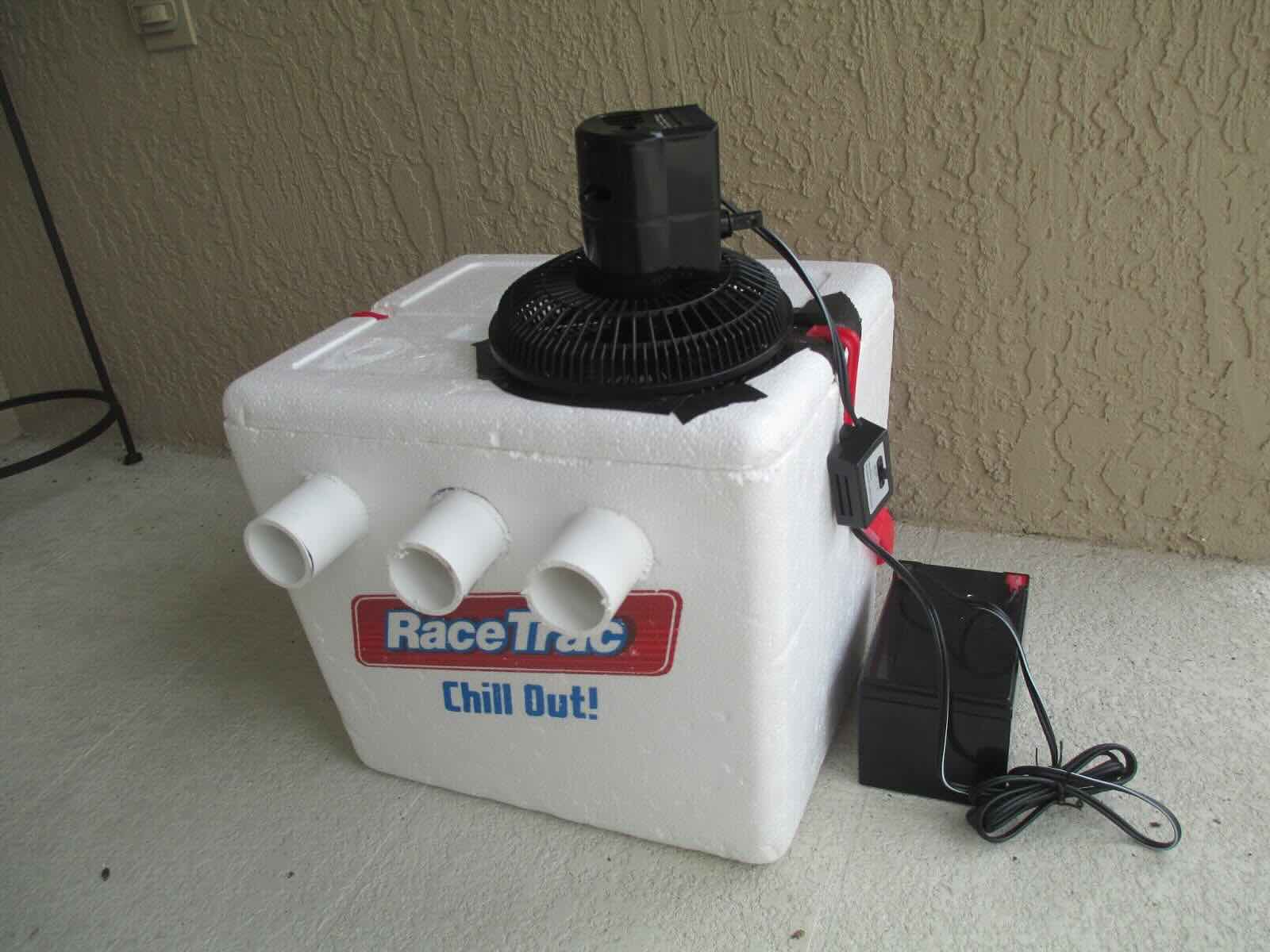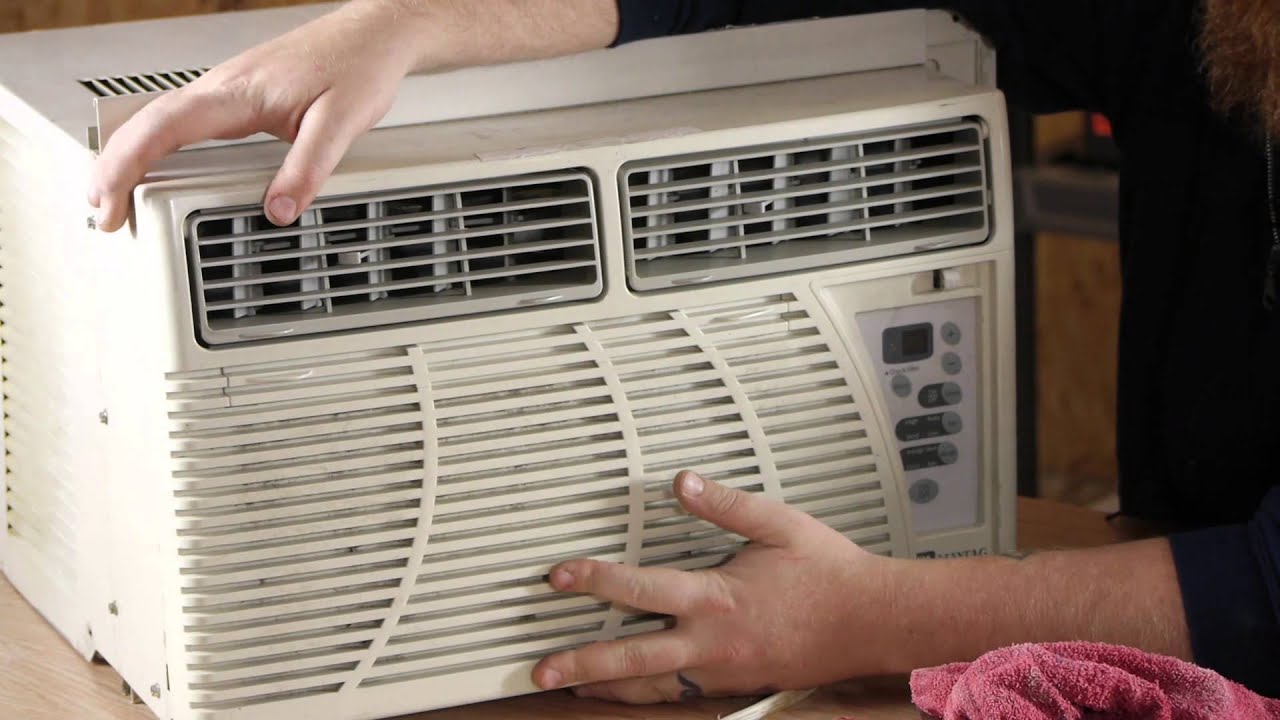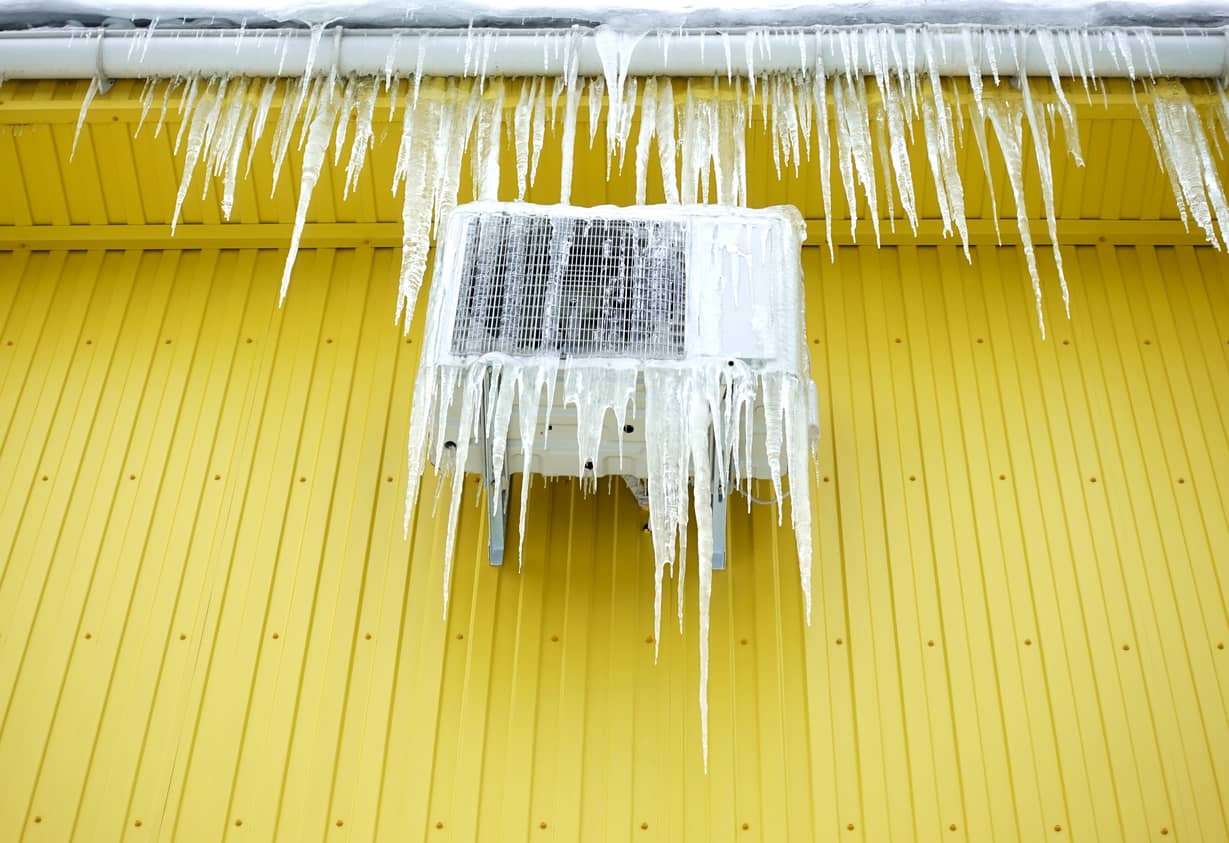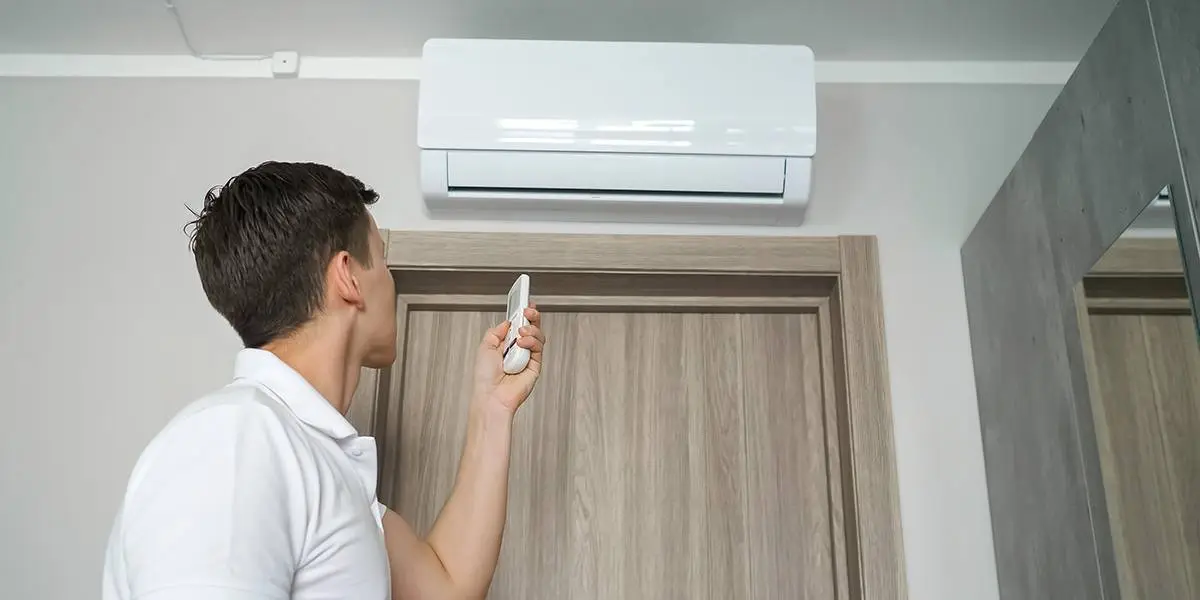Home>Home Maintenance>How To Save Electricity With An Air Conditioner
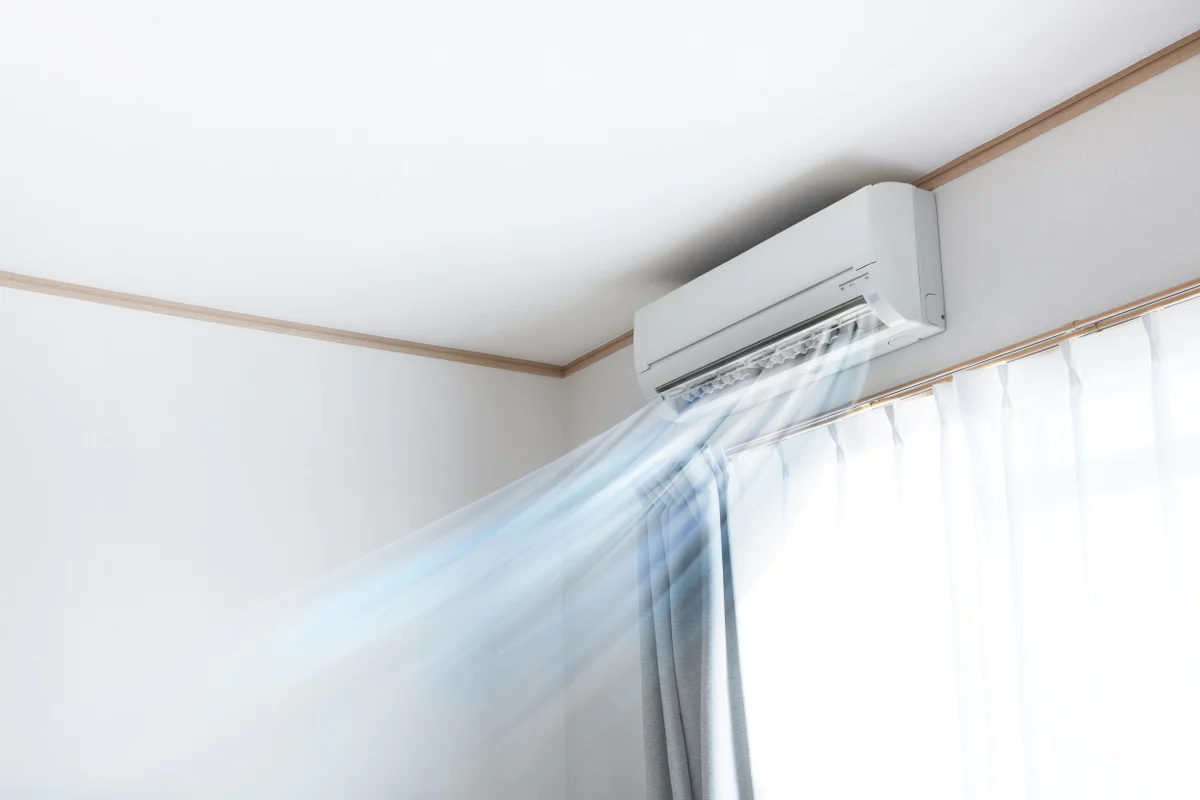

Home Maintenance
How To Save Electricity With An Air Conditioner
Modified: March 7, 2024
Learn how to save electricity with your air conditioner through effective home maintenance tips. Reduce your energy consumption and lower your bills.
(Many of the links in this article redirect to a specific reviewed product. Your purchase of these products through affiliate links helps to generate commission for Storables.com, at no extra cost. Learn more)
Introduction:
Welcome to our comprehensive guide on how to save electricity with an air conditioner. With the rising temperatures during summer months, air conditioners have become a necessity in most households. However, using an air conditioner can significantly impact your energy consumption and electricity bills. The good news is that there are several practical and effective ways to optimize your air conditioner’s energy efficiency without sacrificing your comfort.
In this article, we will explore various strategies and tips that will help you maximize the energy-saving potential of your air conditioner. From understanding the energy consumption of air conditioners to setting the optimal temperature and utilizing energy-saving modes and features, we will cover it all. Additionally, we will discuss the importance of proper maintenance and cleaning, maximizing natural ventilation, using energy-saving accessories, and managing other electronics and appliances to achieve optimal energy efficiency.
We understand that your comfort is a top priority, but we also believe that you can achieve a balance between comfort and energy efficiency. By implementing the tips and strategies provided in this guide, you can make a significant impact on reducing your energy consumption and ultimately reducing your electricity bills.
So, let’s dive in and discover the best ways to save electricity with your air conditioner while keeping your home cool and comfortable.
Key Takeaways:
- Keep your home cool and save electricity by setting your air conditioner to 24-26 degrees Celsius and using energy-saving modes. Proper maintenance and natural ventilation also help reduce energy consumption.
- Use energy-saving accessories and manage other electronics to further reduce electricity usage. By making small changes, you can save money and help the environment.
Understanding the Energy Consumption of Air Conditioners:
Before we delve into the tips for saving electricity with your air conditioner, it’s important to understand how these appliances consume energy. Air conditioners work by cooling and dehumidifying the air in your home, which requires the use of various components and processes that consume electricity.
The primary energy-consuming component of an air conditioner is the compressor. This is responsible for circulating refrigerant through the system, absorbing heat from the indoor air, and releasing it outside. The compressor requires a significant amount of electricity to function effectively.
In addition to the compressor, other factors that contribute to energy consumption include the size and insulation of your home, the outdoor temperature, and the desired indoor temperature. Poor insulation and air leaks can cause your air conditioner to work harder and consume more energy to cool your home.
It’s also important to note that older air conditioner models tend to be less energy-efficient than newer ones. Therefore, if your air conditioner is outdated, it may be worth considering an upgrade to a more energy-efficient model, as this can significantly reduce your energy consumption.
By understanding these factors and how they impact energy consumption, you can make informed decisions and implement effective strategies to optimize your air conditioner’s energy efficiency, ultimately saving electricity and reducing your carbon footprint.
Tips for Efficiently Using Your Air Conditioner:
Now that we have a solid understanding of how air conditioners consume energy, let’s explore some practical tips to help you use your air conditioner more efficiently:
- Set the temperature wisely: The optimal temperature for energy efficiency is usually between 24-26 degrees Celsius (75-78 degrees Fahrenheit). Avoid setting the temperature too low as it will increase energy consumption. Use a programmable thermostat to automatically adjust the temperature when you’re not at home.
- Utilize energy-saving modes: Most air conditioners come with energy-saving modes like “Eco” or “Sleep” mode. These modes adjust the temperature and fan speed to increase energy efficiency. Take advantage of these modes to reduce your energy consumption.
- Keep doors and windows closed: To prevent cool air from escaping and warm air from entering, make sure all doors and windows are properly sealed. This will help your air conditioner work more efficiently and save energy.
- Use curtains or blinds: Direct sunlight can increase the temperature in your home. Keep curtains or blinds closed during the day to block out the sun’s heat and reduce the load on your air conditioner.
- Use fans strategically: Ceiling fans or portable fans can help circulate the cool air produced by your air conditioner. By using fans in combination with your air conditioner, you can create a more comfortable environment without solely relying on the air conditioner.
- Maintain and clean your air conditioner: Regular maintenance and cleaning are crucial for optimal performance. Keep the filters clean and free from dust and debris. Schedule professional maintenance to ensure that your air conditioner is functioning efficiently.
- Maximize natural ventilation: During cooler hours, open windows and use cross ventilation to allow fresh air to circulate through your home. This can help reduce your reliance on your air conditioner and save electricity.
- Insulate your home: Proper insulation in your home can prevent cool air from escaping and hot air from entering. Insulate your windows, walls, and ceilings to retain the cool air and reduce the workload on your air conditioner.
- Manage other electronics and appliances: Appliances like ovens, dryers, and incandescent light bulbs generate heat, which can increase the temperature in your home. Minimize their use during peak cooling hours to reduce the load on your air conditioner.
- Consider smart and programmable thermostats: Smart thermostats allow you to control your air conditioner remotely and set specific temperature schedules. These devices can learn from your habits and adjust the temperature accordingly, maximizing energy efficiency.
By implementing these tips, you can significantly reduce your energy consumption and save electricity while still enjoying a cool and comfortable home environment. Remember, even small changes in your usage habits can make a big difference in the long run.
Setting the Optimal Temperature:
Setting the right temperature for your air conditioner is crucial for both your comfort and energy efficiency. By finding the optimal temperature, you can ensure that your air conditioner is running efficiently while keeping your home cool. Here are some tips to help you set the right temperature:
- Avoid setting the temperature too low: Many people mistakenly believe that setting the temperature very low will cool their homes faster. However, this is not the case and only leads to excessive energy consumption. Set the temperature at a comfortable level, generally between 24-26 degrees Celsius (75-78 degrees Fahrenheit).
- Consider using a programmable thermostat: Using a programmable thermostat allows you to schedule temperature adjustments throughout the day. For example, you can set a higher temperature when you’re not at home and have it automatically lower before you arrive back. This ensures that you’re not wasting energy cooling an empty house.
- Avoid drastic temperature changes: Instead of setting your air conditioner to a drastically lower temperature, try adjusting it in smaller increments until you achieve your desired level of comfort. This will result in less strain on your air conditioner and lower energy consumption.
- Utilize the “Auto” mode: Many air conditioners have an “Auto” mode, which automatically adjusts the fan speed and temperature based on the current conditions. This mode is more energy-efficient as it optimizes cooling without running constantly.
- Consider zoning systems: If you have multiple air conditioning units or areas in your home, consider implementing a zoning system. This allows you to set different temperatures for different zones, focusing cooling efforts on the areas that need it most. This can result in substantial energy savings.
- Use natural ventilation when possible: During cooler hours, like early mornings or evenings, open windows and use natural ventilation to cool down your home. This can help maintain a comfortable temperature without relying solely on your air conditioner.
- Pay attention to humidity: In humid climates, it’s important to manage both temperature and humidity. Air conditioners naturally dehumidify the air, but you may also want to consider using a dehumidifier to alleviate excess moisture in the air. Keeping humidity levels between 40-60% can improve comfort and reduce the workload on your air conditioner.
Finding the optimal temperature for your air conditioner may take some experimentation, as comfort levels can vary from person to person. However, by following these tips and being mindful of energy efficiency, you can strike a balance that keeps you comfortable while also saving electricity.
Utilizing Energy-Saving Modes and Features:
Modern air conditioners come equipped with various energy-saving modes and features designed to improve efficiency and reduce electricity consumption. By understanding and utilizing these modes and features, you can optimize the energy efficiency of your air conditioner. Here are some key energy-saving options to consider:
- Eco mode: Many air conditioners have an “Eco” mode that automatically adjusts the temperature and fan speed to improve energy efficiency. This mode can help reduce your electricity consumption without compromising your comfort.
- Sleep mode: Sleep mode gradually adjusts the temperature and fan speed to create a more comfortable sleeping environment while saving energy. This mode is typically designed to reduce energy consumption at night when cooling requirements are lower.
- Timer function: Most air conditioners have a timer function that allows you to schedule when the unit turns on or off. By setting the timer to align with your daily routine, you can prevent the air conditioner from running unnecessarily and save electricity.
- Smart and programmable thermostats: Smart thermostats offer advanced features that allow you to control your air conditioner remotely and set temperature schedules. They can learn your preferences and adjust the temperature automatically to maximize energy efficiency. Programmable thermostats offer similar functionality, though they may not have the smart capabilities.
- Energy-saving fan mode: Some air conditioners have a fan mode that operates without cooling the air. This function circulates the air in the room, providing a cooling effect without using the compressor. Using the fan mode alone consumes significantly less energy than running the air conditioner at its cooling setting.
- Auto fan speed: Opting for the auto fan speed mode allows the air conditioner to adjust the fan speed according to the cooling demands. It ensures that the fan runs at the most optimal speed to maintain the desired temperature, reducing energy consumption.
- Occupancy sensors: Some advanced air conditioners come with occupancy sensors that can detect if a room is occupied. These sensors can automatically adjust the temperature or switch off the air conditioner when no one is present, saving energy and reducing unnecessary cooling.
By utilizing these energy-saving modes and features, you can effectively reduce your air conditioner’s energy consumption. Experiment with different settings and adjust them based on your needs and preferences. Remember to refer to your air conditioner’s user manual for specific instructions on how to access and utilize these energy-saving options.
Utilizing these modes and features not only helps to save electricity but also prolongs the lifespan of your air conditioner by reducing wear and tear, ultimately leading to cost savings in the long run.
Set your air conditioner to a higher temperature when you’re not home or at night to save electricity. Using fans to circulate air can also help reduce the need for the AC.
Read more: How To Save On Air Conditioning Bill
Proper Maintenance and Cleaning:
Maintaining and cleaning your air conditioner is essential for optimal performance and energy efficiency. Neglecting regular maintenance can result in reduced cooling efficiency, increased energy consumption, and potential system breakdowns. Here are some maintenance and cleaning practices to keep your air conditioner in top shape:
- Clean or replace air filters: Dirty or clogged air filters can obstruct airflow, forcing your air conditioner to work harder and consume more energy. Check the air filters regularly and clean or replace them as recommended by the manufacturer. This simple step can significantly improve energy efficiency.
- Clean the outdoor unit: The outdoor unit of your air conditioner is exposed to dirt, dust, leaves, and other debris. Regularly clean the unit by removing any visible debris and ensuring that the surrounding area is clear. This helps maintain proper airflow, preventing the system from working harder than necessary.
- Clean the indoor coils: Over time, the indoor coils of your air conditioner can accumulate dust and dirt, hindering the heat exchange process and reducing cooling efficiency. Consider scheduling professional maintenance to have your coils cleaned and inspected for any potential issues.
- Check for refrigerant leaks: Low levels of refrigerant can impact the cooling performance of your air conditioner and increase energy consumption. Regularly check for refrigerant leaks and have them repaired promptly by a professional technician to maintain optimal efficiency.
- Inspect ductwork and seal air leaks: Leaky ducts can lead to air loss and reduced efficiency. Inspect your ductwork for any leaks and seal them with appropriate materials. Properly sealed ductwork ensures that cool air reaches its intended destination, reducing the workload on your air conditioner.
- Keep vents and registers unobstructed: Ensure that vents and registers are not blocked by furniture, curtains, or other objects. Blocked vents restrict airflow and force the air conditioner to work harder to distribute cool air, increasing energy consumption.
- Schedule professional maintenance: It’s recommended to have your air conditioner inspected and serviced by a professional technician annually or as recommended by the manufacturer. Professional maintenance can identify and address any issues that may impact energy efficiency, ensuring your air conditioner operates at its best.
By following these maintenance and cleaning practices, you can improve the energy efficiency of your air conditioner, extend its lifespan, and reduce the frequency of repairs. Additionally, regular maintenance helps maintain indoor air quality and ensures your system operates at peak performance during the hot summer months.
Remember to always refer to your air conditioner’s manual for specific maintenance instructions and safety guidelines. If you’re not comfortable performing maintenance tasks yourself, it’s best to seek professional help from a qualified HVAC technician.
Maximizing Natural Ventilation:
Incorporating natural ventilation techniques into your home can help reduce your reliance on air conditioning, saving both energy and money. By maximizing the use of outdoor air and strategically managing airflow, you can create a comfortable and breezy environment. Here are some tips to maximize natural ventilation:
- Open windows strategically: Open windows on opposite sides of your home to create cross ventilation. This allows fresh air to flow through and cool your space naturally.
- Time your windows: Take advantage of cooler times of the day, such as early mornings or evenings, to open windows and let fresh air in. This minimizes the need for air conditioning during these periods.
- Use window coverings wisely: Curtains, blinds, or shades can be used to control the amount of natural light and airflow entering your home. Adjust them to allow for desired ventilation while blocking direct sunlight and excessive heat.
- Install window screens: Window screens are effective in keeping insects out while allowing fresh air to flow into your home. They provide a barrier but still allow for proper ventilation.
- Consider using natural ventilation aids: Utilize ceiling fans, portable fans, or attic fans to enhance natural ventilation. These devices help circulate air and promote better airflow throughout your space.
- Create outdoor living spaces: Outdoor patios, balconies, or porches can be used as extensions of your indoor living area. By spending time in outdoor spaces during cooler times, you can decrease reliance on air conditioning and enjoy the natural breeze.
- Utilize natural architectural features: If your home has design elements like large windows, skylights, or atriums, leverage these features to optimize natural ventilation. These architectural elements can facilitate the flow of fresh air and natural light.
- Utilize natural resources: Plants and trees can provide shade and naturally cool the surrounding area. Strategically plant greenery to block direct sunlight and create a cooler microclimate around your home.
- Improve insulation: While natural ventilation is a great way to reduce reliance on air conditioning, it’s important to ensure proper insulation in your home. Well-insulated walls and roofs prevent heat transfer, keeping the indoor temperature more stable and reducing the need for excessive cooling.
- Monitor outdoor air quality: Be mindful of outdoor air quality, especially if you live in a polluted area. While natural ventilation can be beneficial, it’s important to strike a balance between fresh air intake and maintaining good indoor air quality.
By adopting these natural ventilation strategies, you can reduce the need for air conditioning and enhance the comfort of your home. Experiment with different techniques to find what works best for your space and climate. Remember, natural ventilation not only saves energy but also promotes a healthier and more sustainable living environment.
Using Energy-Saving Accessories:
In addition to implementing energy-saving practices, using certain accessories can further enhance the efficiency of your air conditioning system. These accessories are designed to complement and optimize your cooling efforts, resulting in reduced energy consumption. Here are some energy-saving accessories to consider:
- Thermal window coverings: Thermal window coverings, such as thermal curtains or blinds, are specially designed to block heat transfer through windows. They provide better insulation, reducing the amount of outside heat entering your home. This helps your air conditioner operate more efficiently and saves energy.
- Window films: Window films are thin, transparent layers that can be applied to the interior of windows. They help reflect heat and reduce the amount of sunlight entering your home, preventing excessive heat buildup. Window films are particularly effective in hot climates and can significantly improve cooling efficiency.
- Insulated air conditioner cover: During the offseason or when your air conditioner is not in use, an insulated cover can help protect it from weather elements and keep it clean. This cover prevents heat loss or gain, maintaining the efficiency of your unit and reducing the workload on your air conditioner.
- Smart vents: Smart vents are designed to replace traditional air vents and offer more control over airflow. They can be programmed to open or close based on room occupancy or temperature, allowing you to direct cool air to specific areas of your home. This ensures that cooling is focused where it’s needed, optimizing energy usage.
- Ceiling fans: Ceiling fans are an excellent addition to any cooling strategy. They help circulate the cooled air throughout the room, creating a wind-chill effect that can make you feel cooler. By using ceiling fans in conjunction with your air conditioner, you can raise the thermostat temperature, reducing energy consumption without sacrificing comfort.
- Smart power strips: Electronics and appliances continue to consume electricity even when they’re turned off. Smart power strips help combat this “phantom power” by cutting off power supply to devices that are not in use, reducing energy wastage. Connecting your air conditioner to a smart power strip ensures that it’s not consuming electricity when it’s not actively cooling.
- Programmable timers: Programmable timers can be used to automatically turn on and off additional cooling equipment, such as portable fans or evaporative coolers. This allows you to cool specific areas of your home only when needed, saving energy and reducing overall electricity consumption.
- Energy-efficient light bulbs: Though not directly related to air conditioning, using energy-efficient light bulbs like LED or CFLs can reduce heat output. Traditional incandescent bulbs produce significant heat, which can increase the temperature in your home and cause your air conditioner to work harder.
When considering energy-saving accessories, make sure to choose those that are compatible with your air conditioning system and align with your energy-saving goals. These accessories, when used in conjunction with other energy-saving practices, can significantly reduce your energy consumption and enhance the efficiency of your cooling efforts.
Managing Other Electronics and Appliances:
While optimizing the energy efficiency of your air conditioner is crucial, it’s equally important to consider the impact of other electronics and appliances in your home. The collective energy consumption of these devices can significantly affect your overall energy usage. By managing these devices and adopting energy-saving habits, you can further reduce your electricity consumption. Here are some tips for managing other electronics and appliances:
- Turn off and unplug when not in use: Many electronics and appliances continue to consume energy even when they’re not in use. Get into the habit of turning off and unplugging devices when they’re not needed, such as televisions, gaming consoles, computers, and chargers. This simple step can save a considerable amount of electricity.
- Utilize power-saving settings: Most electronic devices, such as televisions and computers, have power-saving settings or energy-saving modes. Enable these settings to reduce energy consumption when the devices are idle or not in use. Adjust the settings according to your preferences and usage patterns.
- Opt for energy-efficient appliances: When purchasing new appliances, look for those with the ENERGY STAR rating or high energy efficiency ratings. These appliances are designed to consume less energy without compromising functionality. Upgrading to energy-efficient models can lead to significant long-term energy savings.
- Avoid using heat-generating appliances during the day: Appliances like ovens, dryers, and dishwashers generate heat when in use. Avoid using these appliances during the peak heat hours of the day, as they can increase the indoor temperature and put additional strain on your air conditioner.
- Use natural light instead of artificial lighting: Take advantage of natural light during the day by opening curtains or blinds. Utilize sunlight to brighten your space and minimize the need for turning on lights. When artificial lighting is necessary, opt for energy-efficient LED or CFL bulbs.
- Consolidate electronics on power strips: Instead of having multiple devices plugged into different outlets, use power strips to consolidate and centralize the power supply. This allows you to easily turn off multiple devices at once, preventing standby power consumption.
- Avoid overcharging devices: Overcharging electronic devices not only wastes electricity but also reduces the lifespan of the battery. Unplug devices promptly once they are fully charged to save energy and promote battery longevity.
- Consider energy management systems: Energy management systems, such as smart plugs or energy monitors, enable you to track and manage the energy consumption of various devices in real-time. By monitoring your energy usage, you can identify areas for improvement and make informed decisions to reduce energy consumption.
- Encourage energy-saving habits among household members: Educate your family members or roommates about the importance of energy conservation and encourage them to adopt energy-saving habits. Simple actions like turning off lights and unplugging devices can collectively make a significant impact on reducing energy consumption.
By managing other electronics and appliances in your home, you can minimize the overall energy load and optimize energy efficiency. Remember, energy-saving practices should be applied consistently to make a lasting impact on your electricity consumption and contribute to a more sustainable future.
Conclusion:
In conclusion, saving electricity with your air conditioner is not only beneficial for your wallet but also for the environment. By implementing the strategies and tips outlined in this guide, you can optimize the energy efficiency of your air conditioner and reduce your overall energy consumption, all while maintaining a comfortable living environment.
Understanding the energy consumption of air conditioners is the first step in making informed decisions to save electricity. By knowing how air conditioners work and consume energy, you can take measures to maximize efficiency, such as setting the optimal temperature and utilizing energy-saving modes and features.
Proper maintenance and cleaning are essential for the optimal performance of your air conditioner. Regularly cleaning or replacing air filters, cleaning coils, and scheduling professional maintenance not only improve energy efficiency but also prolong the lifespan of your AC unit.
Maximizing natural ventilation is a cost-effective way to reduce reliance on air conditioning. By strategically opening windows, using window coverings, and creating outdoor living spaces, you can leverage fresh air and breezes to create a more comfortable indoor environment.
Using energy-saving accessories and managing other electronics and appliances also play a critical role in reducing energy consumption. From thermal window coverings and smart vents to smart power strips and energy-efficient bulbs, these accessories can further enhance energy efficiency and contribute to overall savings.
By incorporating these strategies and tips into your lifestyle, you can make a significant impact on reducing your electricity bills and minimizing your carbon footprint. Remember that even small changes can add up to big savings over time. So, take action today and start saving electricity with your air conditioner, while enjoying a comfortable and environmentally-friendly home.
By following the valuable information and guidelines in this guide, you are on your way to becoming an energy-saving expert, making a positive impact on both your wallet and the planet.
Frequently Asked Questions about How To Save Electricity With An Air Conditioner
Was this page helpful?
At Storables.com, we guarantee accurate and reliable information. Our content, validated by Expert Board Contributors, is crafted following stringent Editorial Policies. We're committed to providing you with well-researched, expert-backed insights for all your informational needs.
